How To Prepare Your House
To Be Lifted or Moved
Moving or lifting a house requires careful preparation and attention to detail.
This article provides a thorough examination of what needs to be done to get your house ready.
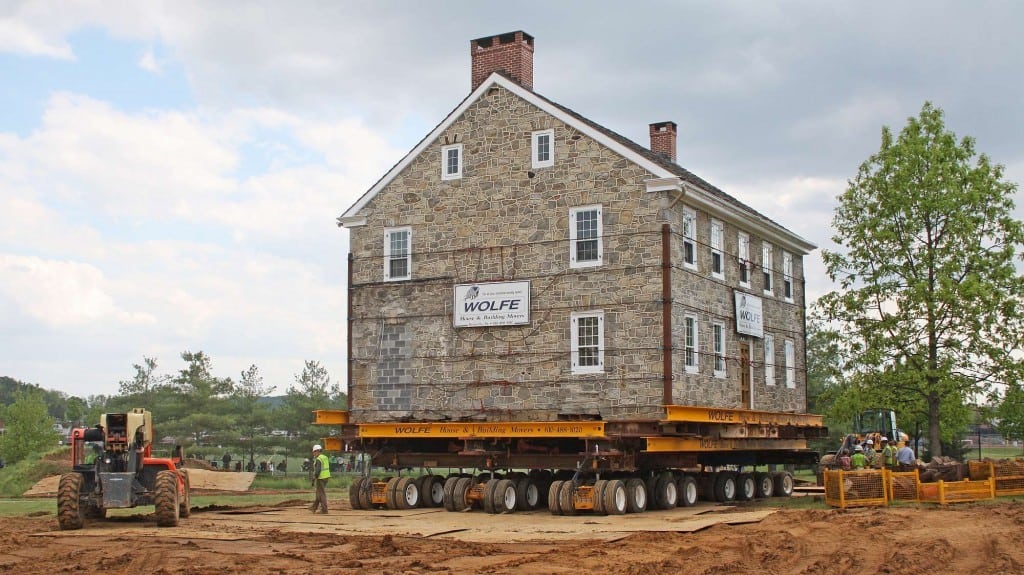
Have you considered lifting or moving your house? It is a valuable way to protect your investment in your home, and is an increasing option for owners trying to save a historic building or raise their house above the flood zone.
House lifting involves raising a home above its current foundation and building a new foundation underneath. House lifting projects are common in coastal areas and along rivers, especially in the wake of a natural disaster like a hurricane. Lifting the house to the required Flood Protection Elevation (FPE) can save home owners thousands of dollars in home insurance. House lifting can also be done to add a new first story or expand a basement or crawlspace (in conjunction with an excavation service). By lifting your home you can save your home, add value and usable space to your home, and avoid future damage.
There’s a lot that goes into lifting a house. If you are unsure of all the steps you need to consider when lifting or moving a house, we’ve created an outline of the basic steps that are crucial to any house moving project.
Here are the things you need to consider when preparing your house to be moved.
1. Hire a General Contractor
We specialize in lifting and moving houses. We do not serve as the general contractor for your entire project, so we recommend that you hire a general contractor to care for all of the other aspects of the project, including (but not limited to): engineering, surveying, obtaining permits, disconnecting and reconnecting utilities, excavation, laying the new foundation, carpentry, landscaping, etc.
You or your general contractor will be responsible for all permits. If you need documents from us to complete your permit, please contact our office, and we will provide them to you once we have a signed contract. Some towns may require additional drawings that show how we intend to place our equipment. The State of New Jersey requires a shop drawing showing the layout of our equipment for each project. We will provide this shop drawing to you for no charge. For the towns that require that drawing to be stamped by an engineer, you can either have your own engineer take care of it, or we can have it stamped for an extra fee.
2. Confirm Plans for New Foundation
There are three primary things from your plans for the new foundation that we will need to confirm:
- The lift height: This is the exact difference between the existing first-floor elevation and the new proposed first-floor elevation (usually noted on plans as “existing FF” and “proposed FF”).
- New footers? Will you be laying up on top of the existing foundation, or will you be removing the existing footers and foundation to install new ones? We will need to know the details of your plan for the footers.
- New foundation: Some new foundation designs may require us to rig our lifting steel in a different way. Seeing your new foundation plans helps us to avoid a costly change order to re-rig the lifting steel.
Once you receive your new foundation plans from your architect or engineer, please email a copy to us.
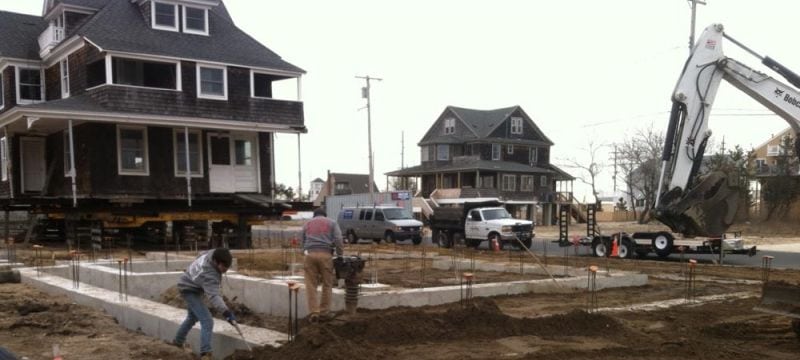
3. Read the Moving Contract
Our contract will be written in plain language, not legalese, and each paragraph provides you with essential information. It’s imperative that you read it carefully. We want you to be fully informed and happy with the process. If there is something in the contract that you don’t understand, please give us a call and we’ll be happy to walk you through it.
Because we can only bid on what we know, it’s important that you advise us of any changes to your plans. If there are changes made after we have sent a proposal, just call or email us informing us of those changes and we can easily revise the proposal.
The same is true for our contract. If you have not yet signed the contract, we can easily revise it and send you a new one. If you have signed the contract and sent it back with the deposit, we can write up any changes as a Change Work Order. Up until the day we begin work, any changes will be priced as if it was bid that way originally. Any changes after we load our trucks to head out could cause extra loading and/or mobilization fees to be added to the cost to move the house.
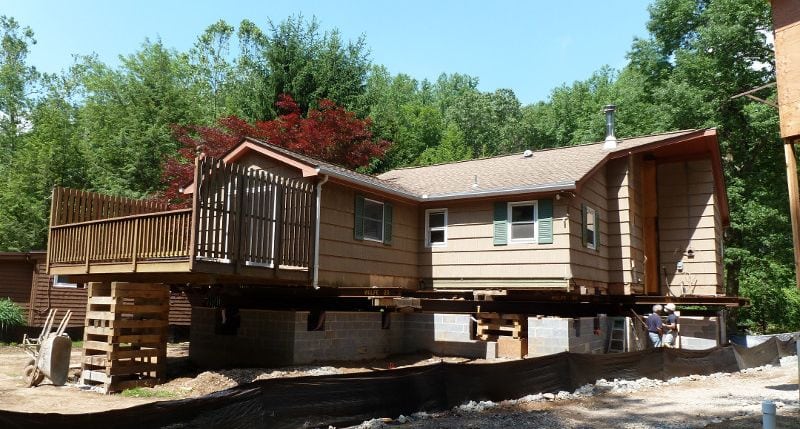
4. Site Preparation
There are some things you need to have ready before we arrive to begin lifting or moving your house.
Under the House
Cleaning out your basement or crawlspace. Having to work in a basement or crawlspace that has appliances, utilities, trash, or stored items is time consuming for our crew, and it’s dangerous for both our crew and your belongings. We ask that you remove everything so we have a clear space to work. If something is impossible or unreasonably hard to remove, please inform our office so our crew can plan to work around it from the start.
Plumbing and ducts. Remove any pipes, plumbing, and ductwork that hang below the floor joists. Our lifting steel will usually be installed from side to side AND from front to back. It can be up against the floor joists, a foot below the joists, or anywhere in between. Because of this, we ask that all of your pipes and ductwork be removed ahead of time.
Please note that we can work around wiring. As much as possible, just get it tacked up between the joists or tacked tightly up to the bottom of the joists.
Inside the House
You can leave the inside of your house as it is. Don’t worry about extra weight, or about anything sliding around in the house. When we lift your house, it will be a very slow, smooth process. If you have any valuable items that might be a bit unsteady, it doesn’t hurt to pack it up or lay it down on the floor, but it would be highly unusual for anything to fall over or be damaged. Even when moving a house, we move it slowly and keep it on a level plane so there is no jolting or bumping to disturb the house.
Outside the House
Steps. Wood steps from porches, decks, or doors should be removed ahead of time. They will not work anyway once your house is lifted.
Decks. Any wood decks or porches that are not to be lifted must be removed and demolished ahead of time. If you want to keep the deck at its existing elevation, please check with your salesman about whether it may incur a charge for our crews having to work around it.
Accessories. Any outdoor showers, lean-tos, and utility platforms will need to be removed ahead of time.
Shrubbery. All shrubbery, plants, and bushes that are right around the house need to be removed ahead of time. If there are any plants that you would like to keep, transplant them to a back corner of the property or to a friend’s property ahead of time. Any larger bushes that are valuable to you should be clearly marked out with tall stakes and caution tape. Our crew will do their best to work around them. Keep in mind that if it absolutely has to come out for us to finish our work, we reserve the right to remove it. We can usually work around trees, but we reserve the right to remove them if necessary.
Landscaping. Landscaping such as pavers, sidewalks, flower beds, and rocks may need to be moved. We will use a skid loader to carry the lifting steel and equipment to where it is needed around the house. If your pavers or landscaping are left in place, you run the risk of having them run over or bumped into. If they are important to you, please remove them ahead of time.
Fences. Fences around the house may need to be removed. If the fences come up against the house, we would like them to be removed for clear access. Please check with your salesman about your property line fences if they are anywhere close to the house.
Use of Neighboring Property. If you have plenty of room around your house, you have nothing to worry about here. If your property meets your neighbor’s property fairly close to your house, check with your salesman to see if access to their property is necessary. Keep in mind that we bid to lift your house using your neighboring property if necessary. If your neighbor will not allow it, or you would rather not even ask, we can still lift your house. It might cost a little more if we have to alter our lifting methods. If we do have permission to use your neighbor’s property for installing the lifting steel, there will be a range of what we will do depending on the situation. It could be as little as swinging the end of a beam over their property line. It could also mean that our skid loaders will have to be on their property. If this is the case, you can expect some scuffing and possible ruts in the yard. In these cases, we expect you to repair the neighboring yard when you are re-landscaping your own yard after your lift.
Marking-out Utilities. We will do the required “before you dig” phone call. This will only mark out underground public utilities. You are responsible for marking out your own private utilities, i.e., your well, septic tank, leach field, underground gas or electric lines, etc. These items need to be marked with paint and flags, and you should make our foreman aware of your markings as soon as he arrives on-site.
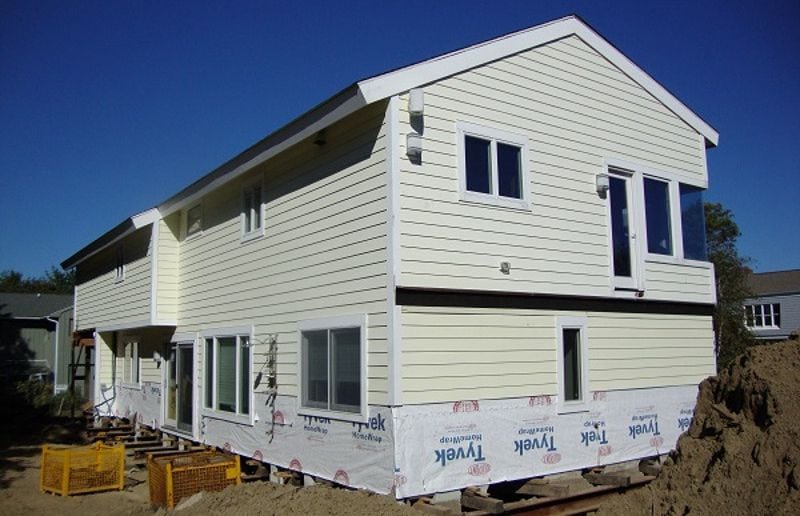
Odds & Ends
Lifting Houses on Slab Floors
It is possible to lift an entire house, or a section of a house, that is built on a slab floor. The most common and usually the cheapest way is to install the lifting beams approximately three or four feet above the slab floor, attach a band board or angle iron to the wall studs just above the lifting beams, and lift the walls up off of the slab floor. This allows you to build your new foundation up, frame a new floor system across, and then have the walls set down onto it.
Lifting this way requires you to remove all furniture, appliances, lower cabinets, and bathroom fixtures that are sitting on the slab. You will also have to remove some or all of your first-floor window sashes from their frames, and remove some drywall and some siding, for our lifting steel to be installed. You will then have to replace the siding and the drywall, and set the window sashes back into the frames, after our lifting steel is removed.
If you have a beautifully finished kitchen or bathroom on the slab floor, or if you would simply rather lift this way, we can excavate under the concrete slab, support it, and lift the entire house with the concrete slab intact. When lifting this way you do not need to touch a thing inside the house.
It will be a different story outside the house. In most cases, we would need to remove about four feet of dirt under the slab to get the house supported. This would require a place to pile the dirt, or you would need trucks to haul the dirt to a nearby location. Once the house is lifted to its proper elevation, the new foundation would have to be more complex than normal. The added weight of the concrete slab is considerable, so the foundation would have to be designed accordingly.
Also, there will need to be steel beams running under the slab at 4- to 5-foot intervals for permanent support (think of them as your new floor joists). Then a new center beam or two will be placed under those. This all takes more time, but in the end the first floor will look the same as it did before the lift. There may be a hairline crack here or there, but usually you will not even see those.
Some people, even engineers or other lifters, will tell you that lifting this way cannot be done, but rest assured that we do it regularly at Wolfe. We can provide job profiles of previously completed projects upon request.
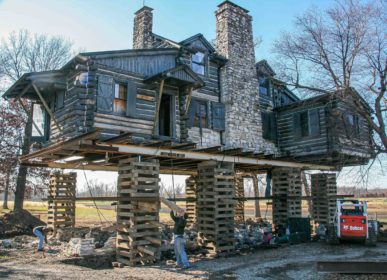
Excavating for Cribbing Piles
It is essential that we know if you are removing your existing foundation or if you are laying up on top of your existing foundation. Our cribbing piles (the structures we assemble to support your house) are usually situated fairly close to the walls, which is fine if you are not doing any digging near them. But it can cause a problem if we don’t know you are digging for new footers, because we default to setting our cribs at the existing ground level under the house. If our cribs are set at ground level and you dig three feet down for new footers close to them, you undermine the very support of the house. This is extremely dangerous and should never be done.
The correct way: let us know before we lift the house that you are digging for new footers. We will then excavate a “crib pit” for each cribbing pile, or, if possible, we will locate the crib pile away from your excavation so that it will be safe. This will allow you to do your excavation without undermining our cribbing piles and endangering your house and the crew that is working under the house. If you have any doubt about any of this, please contact your salesman for clarification.
Replacing or Adding Permanent Steel
When we support your house for lifting, we support up to the bearing points wherever they are.
Usually these are the sill plates and the center beams. Many times, we won’t even touch the floor joists with the lifting beams. Since we are supporting the weight of the house at these places, you are not usually able to remove and replace them easily.
Often the architect will call for the old center beam to be replaced with a new wooden or steel center beam. You will be able to do this, but usually not while we have it supported up in the air.
When the house is set down, and just as it touches the new foundation, you or your general contractor can stand temporary supports up to the floor joists on either side of the center beam to take over the weight of the floor joists and the walls above. Then, after we have finished lowering our steel and removing it, you can remove the existing center beam and install the new beam and the new permanent posts supporting it. This is the normal process and takes place on 60% to 70% of the houses we lift.
If you plan to add new laminated or steel beams around the perimeter of the house, please make sure we are aware of this when we bid your project, or as soon afterward as possible, because it requires us to rig our steel differently. You cannot install these beams before we lower the house, because as we lower, our steel would hit your new beam, preventing the house from lowering the final foot or two.
Instead, we will install our lifting steel lower than normal and support up to the joists just inside the sill plate. This will allow you to install your permanent beam between the lifting steel and the sill plate. Then, when we lower the house, you can leave a pocket in the top of the new foundation. As our lifting steel lowers into the pocket, the new permanent beam will settle into its pocket, and then the sill plate will set right down onto it as it should.
Your general contractor will need to be on-site coordinating with us on lowering the house and making sure everything goes into its proper place.
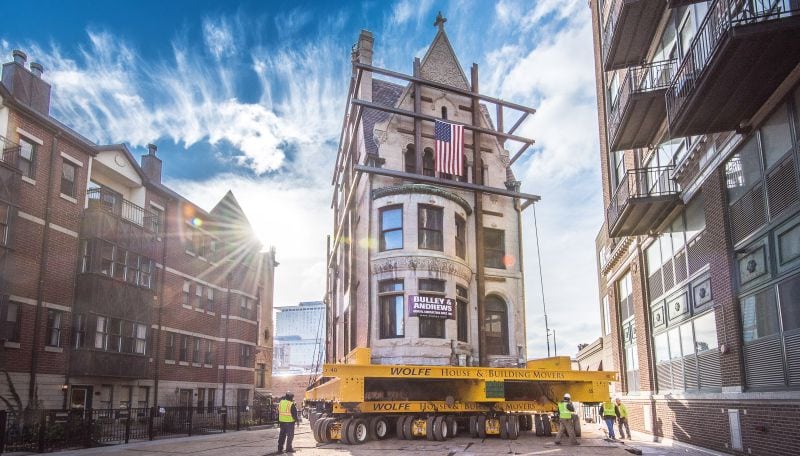
location for future preservation.
We are Experienced House Lifting Contractors
While this process may seem a bit overwhelming, we’re here to help you every step of the way. We do this every day, and we want you to benefit from our experience and expertise. With offices in Pennsylvania, New Jersey, and North Carolina, we have raised hundreds of houses along the eastern United States. Please contact the team at Wolfe House & Building Movers with any questions you have about moving or lifting your house.
Contact Us To Talk About Your Project
At Wolfe House Movers, we believe that we provide the best overall lifting and moving experience, terms, and insurance. We plan ahead to ensure that your experience with us is a positive one.
Call us at 610-488-1020 to speak with one of our helpful project estimators.
